Hamsa Hand Symbol and Meaning Guide
Introduction to the Hamsa hand symbol
The Hamsa hand or hand of Fatima is one of the oldest symbols in the world. It predates any major religion or organized religion in general. This symbol is found in many cultures, because they were adopted to fit in their beliefs.
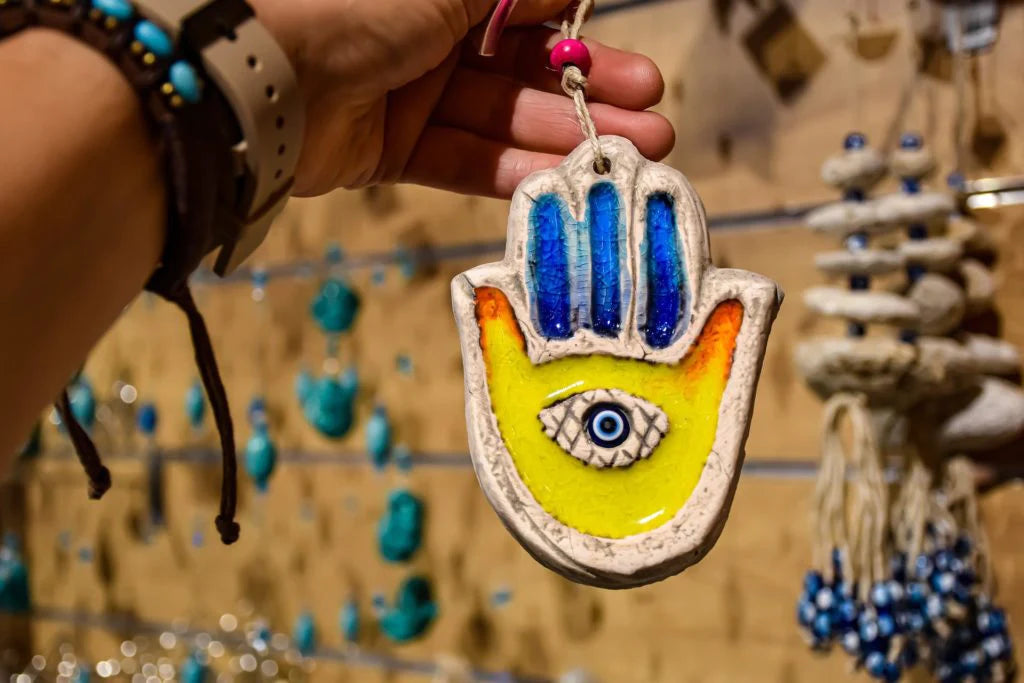
The common representation of Hamsa hand, is the symbol of safety and protection that many of the different religions use.
If you've visited the Middle East or North Africa, you've probably seen this symbol of protection, as it originated here somewhere. To keep negative energies away, and to praise God, they wear it as an accessory, on clothing, and even tattoos.
People in the Middle East sometimes whisper "Hamsa" three times, followed by "spitting" three times. This has the same religious meaning as when we touch wood to keep negative thoughts away.
This symbol is an upright hand with three fingers joined in the middle and two thumbs facing in different directions. One of its most prominent aspects is a big eye on the palm, which is an essential part of the Hand of Fatima or Hamsa hand.
RELATED: 400 Profound Quotes About Life To Live With More Purpose & Intention
It also features numerous patterns coming up from the sign and into the fingers pointing up or down, and it's believed that the eye on the palm serves to ward off the evil eye.
Key Takeaways
- Protective Charm Against Evil: Widely recognized for its protective qualities, the Hamsa symbolizes defense against evil forces, negativity, and the evil eye. It is a potent talisman believed to bring good luck and safeguard against negative energies.
- Multifaceted Symbolism: The Hamsa hand's orientation dictates its meaning. Positioned upwards, it signifies protection, while facing downwards represents wealth, happiness, and efficient warding off of evil. This duality adds depth to its symbolic significance.
- Rich Cultural and Religious Heritage: Having transitioned through Mesopotamia, Carthage, Islam, and Judaism, the Hamsa carries a rich cultural and religious history. It holds significance in Islam as "the hand of Fatima," represents the Torah in Judaism, and has ties to Christianity.
- Spiritual Significance Across Religions: In Islam, the Hamsa symbolizes protection and good fortune. Judaism associates it with the Torah and the hand of Miriam. In Christianity, it may represent the hand of Mother Mary, embodying compassion and femininity.
- Symbolic Presence in Eastern Spirituality: In Buddhism and Hinduism, the Hamsa is connected to energy flow through mudras and chakras. It symbolizes the interconnected senses and channels positive energy, making it relevant in Eastern spiritual practices.
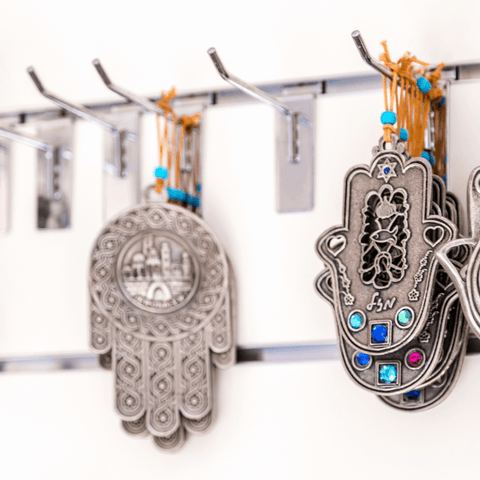
Hamsa hand history
- The Hamsa hand, originating thousands of years ago, is an ancient symbol representing God's hand in the Middle East. It serves as a protective charm in various faiths and is associated with prosperity and wealth.
- Predating major religions, the Hamsa has become a universal sign of safety in many cultures, believed to bring good luck to its owner.
- First discovered in ancient Mesopotamia and Carthage (modern-day Tunisia), the Hamsa has a rich history in the Middle East.
- The Hamsa found its way into the Islamic faith through the story of Fatima and her husband's betrayal, later serving as a symbol to protect women. It then transitioned from Islam to Judaism.
- The symbol is associated with protecting the owner from various forms of evil, including the modern concept of the evil eye.
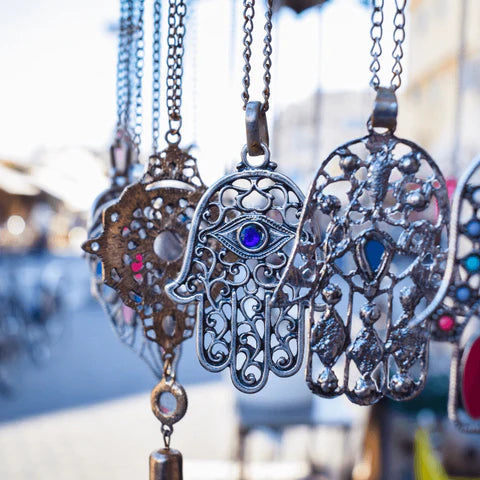
RELATED: 150 Inspiring Quotes About Friendship To Cherish The People
What does the Hamsa hand symbolize?
For thousands of years now, the Hamsa has been very present in drawings, on walls, tattoos, jewelry, and various other items.
The natives of Mesopotamia adopted the five-finger sign because they had a phrase that said, "Here's five fingers in your eye." Hence why the Hamsa hand usually has an eye in the middle and why it became a symbol of protection.
Over the ages, some of its meaning and features have changed. But, its still known to be a symbol of protection across all religions.
People believe it brings all-around good fortune to its wearer. However, there is a difference in the way one wears it.
Should you place your Hand of Fatima Up or Down?
| Position | Meaning |
| Upwards | Protection, guarding charm, evil, and negativity away |
| Downwards | Wealth, happiness, welcomes good things, wards off evil more efficiently |
It’s helpful to know the symbol doesn't have the same meaning depending on the way the hand faces and how you wear the it.
When you position your Hamsa hand upwards it will bring you protection. It acts as a guarding charm, keeping all evil and negativity away whether it comes from within or the outside world.
Wearing the symbol up with the fingers close together amplifies its protective powers.
Wealth, happiness, and welcomes all good things coming your way, is what Hamsa hand in downwards position represents.
Often, wearing the Hamsa hand down with the fingers spread apart helps ward off evil more efficiently.
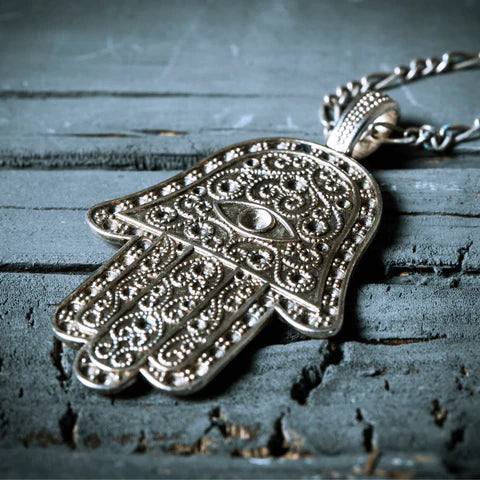
RELATED: 135 Sweet Dream Quotes To Help You Attain What You Seek
Different Names of Hamsa
Hamsa or Khamsa
When translated from the Arabic “Jamsa”, it means five
Hand of Myriam or Miriam
Named after Miriam, the sister of Moses of the Jewish religion
Hand of Mary
Named after Mother Mary, the mother of Jesus Christ
Hand of Fatma or Fatima
Named after Fatima, the Islamic prophet Mohammed’s daughter
Hamesh
which means five (the number) in the Hebrew alphabet
Hamsa Hand Meaning Across Cultures
| Culture | Name | Meaning |
| Islam | Hand of Fatima | Protection and good fortune |
| Judaism | Hamesh | Reflects Torah's five holy books |
| Buddhism | Five Fingers Symbol | Represents senses, interconnected with mudras |
| Christianity | Hand of Mary | Compassion, strength, femininity |
Islam:
- Known as "the hand of Fatima" in Islam, the Hamsa is revered by both Shia and Sunni Muslims. Fatima al Zahra, the daughter of Prophet Mohammed, is associated with the symbol, and invoking her is a common practice for protection and good fortune in Muslim culture.
- The Hamsa symbolizes the five pillars of Islam: faith, charity, prayer, fasting, and pilgrimage.
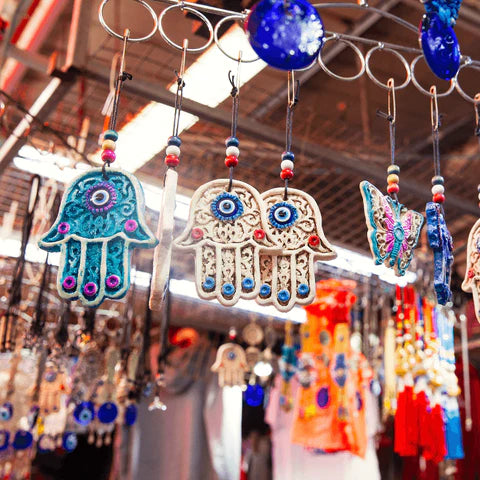
Judaism:
- In Judaism, the Hamsa is known as "hamesh," representing the Torah's five holy books: Genesis, Exodus, Leviticus, Deuteronomy, and Numbers.
- The Hamsa in Jewish culture also symbolizes the fifth letter of the Hebrew alphabet, "Heh," representing one of God's holy names. It is sometimes referred to as the hand of Miriam, after Moses's sister.
Christianity:
- Some Christians interpret the Hamsa as depicting the hand of Mother Mary, symbolizing compassion, strength, and femininity.
- In Christianity, the fish symbol may replace the eye in the Hamsa, representing protection against harm. However, some Christians prefer crosses for protection, expressing concerns about the symbol's adoption by other religions.
Middle Eastern and North African Cultures:
- The Hamsa hand is widely embraced in various Middle Eastern and North African cultures as a protective amulet. It is believed to guard against the evil eye and negative energies. It is common to find the Hamsa displayed in homes, workplaces, and as part of traditional attire.
Mediterranean Traditions:
- The Hamsa is prevalent in Mediterranean cultures, including Greek and Turkish traditions, where it is considered a symbol of good luck and protection. It is often used in jewelry and decorative items.
Buddhism:
The five fingers in Buddhism have five senses which run through the body and mind interconnects with the five fingers of Hamsa hand. The meaning of the Hamsa is the same in Hinduism.
This energy passes between the centers with the help of various hand gestures. Meditating or doing yoga channels this energy. Vibration in each finger, and the Hamsa hand is connected with the five mudras:
- The thumb connects with the solar plexus chakra and the fire element
- The index finger with the heart chakra and air element
- The middle finger with the throat chakra and ethereal element
- The ring finger with the root chakra and the earth element
- The pinkie finger with the sacral chakra and the water element
Hamsa jewelry
| Material | Common Usage |
| Wood | Crafted into pendants, necklaces, and bracelets |
| Sterling Silver | Popular for creating intricate Hamsa jewelry |
| Various Materials | Range from traditional to modern designs |
- Hamsa hand jewelry is widely worn globally as a talisman against evil luck, crafted from materials ranging from wood to sterling silver.
- Pendants on necklaces are a common way to wear the Hamsa, with the hand of Miriam, whether facing up or down, believed to ward off the evil eye.
- The Hamsa is worn as a necklace, bracelet, or ring, ensuring the good luck charm is visible and serving as a reminder of the symbol's protective qualities.
- Wearing the Hamsa alongside other lucky symbols or crystals is believed to enhance the attraction of good fortune and abundance, extending beyond protection against the evil eye.
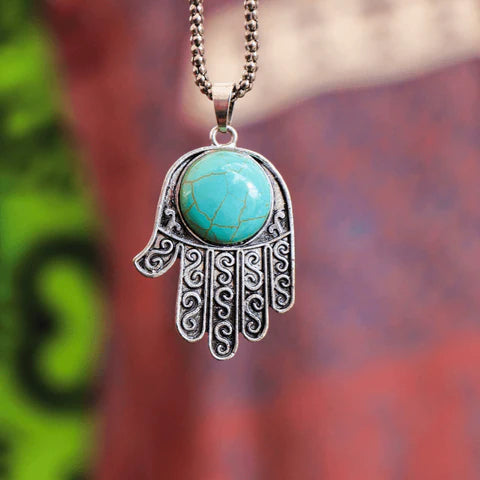
RELATED: 132 Best Memories Quotes To Bring Back The Good Times
Should you wear the Hamsa?
It's important to remember that the symbol means far more than just an accessory. One should remember to honor it's history and cultures that use it as a spiritual symbol.
You are more than welcome to wear the Hamsa hand, if you are comfortable with the rich history it carries.
Prosperity and abundance is the universally recognized sign of Hamsa or the Hand of Miriam. Wearing it keeps away the evil eye and helps ward off the evil that may come your way in general.
Frequently Asked Questions
What does the Hamsa hand symbolize?
The Hamsa hand symbolizes protection, good fortune, and defense against the evil eye in many cultures. It is associated with positive energy, blessings, and spiritual well-being.
Which cultures embrace the Hamsa hand?
The Hamsa hand is embraced by various cultures, including Islam, Judaism, Christianity, and others. It has become a universal symbol of protection against negative energies.
How is the Hamsa hand used for protection?
Hamsa hand jewelry, worn as necklaces, bracelets, or rings, is a common way to use the symbol for protection. It is believed to ward off evil and bring good luck to the wearer.
Can the Hamsa hand be made from different materials?
Yes, Hamsa hand jewelry can be crafted from a wide range of materials, including wood, sterling silver, and others, offering diverse options for wearers.
What is the significance of the hand of Miriam in the Hamsa?
The hand of Miriam is a reference to Moses's sister in Judaism and is often associated with the Hamsa hand. It is believed to protect the evil eye.
How is the Hamsa hand-worn?
The Hamsa hand is commonly worn as a pendant on necklaces, but it can also be worn as a bracelet or ring. The direction of the hand, whether facing up or down, is thought to have specific meanings.
Can the Hamsa hand be combined with other symbols or crystals?
Yes, wearing the Hamsa hand alongside other lucky symbols or crystals is believed to amplify the chances of attracting good fortune and abundance, beyond protection against the evil eye.

